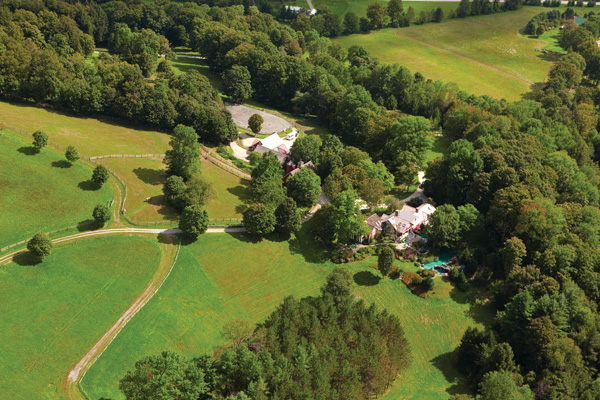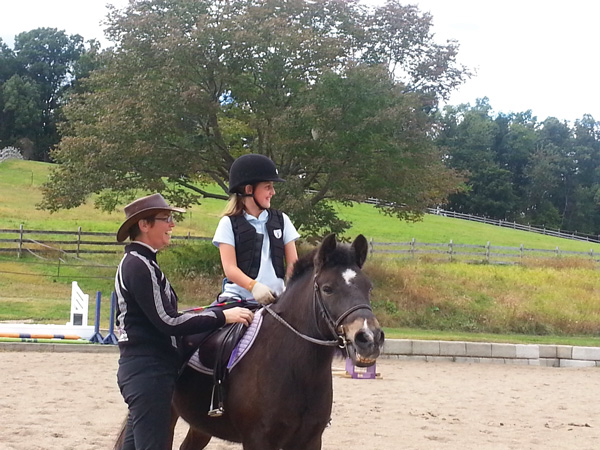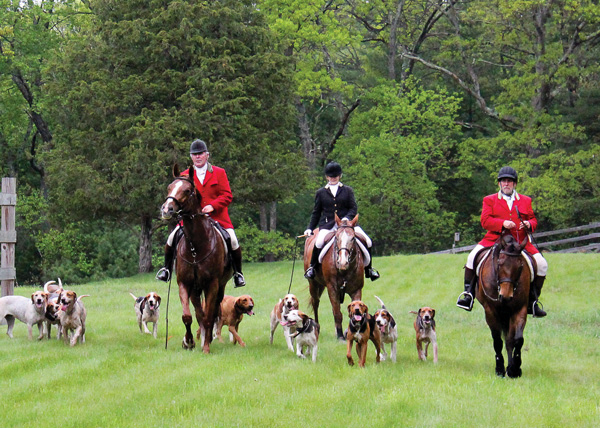Three farms, three visions: Living and loving conserved Horse Properties
Originally published Winter 2013
The open meadows, barns, and stone walls of equestrian properties are archetypes of the New England countryside. When these properties are protected by conservation easements, they are safe from development forever. However, it takes more than landscape, buildings, and conservation guarantees to create a truly special legacy. It requires the passion of owners who can imagine the potential of a property and work to make their dreams an enduring reality.
Of course, another benefit is that donated easements currently can qualify for significant federal income tax deductions and, in some states, additional income-tax credits or property-tax reductions.
Three conserved equestrian properties show how their owners’ vision, and love of horses and landscape combine to create inspiring legacies:
Building on a conservation legacy
Stephen and Lynn Browne have long been leaders of the Norfolk Hunt Club of Massachusetts, one of the oldest registered drag hunts in the United States. In the Norfolk Hunt, “two-legged foxes” lay down a scent trail for hounds to follow through pastures and woodlands, over country open to the hunt, because of the kindness of local landowners. As development encroached, Stephen and Lynn Browne committed themselves to conserving land for the hunt and the public. The Brownes led by example when, in 1994, they donated a conservation easement on their Pinecroft Farm in Medfield.
Fittingly for stewards of a long-standing tradition, they donated the easement to the oldest conservation group of its kind, The Trustees of Reservations, founded four years before the Hunt in 1891. The Browne’s beautiful horse farm is close to the center of the town, yet is exceptionally private and quiet, thanks to the protected land that surround the house, barn, and riding areas.
Twenty years after their original gift, they donated two additional conservation easements on adjoining land, creating a remarkable protected landscape in the historic center of Medfield. “We were thrilled to be able to add on to the original conservation easement when we acquired the abutting properties,” said Stephen, “and our experience with the first easement made us comfortable going ahead with additional protection.”
Stewardship of a gem
When Brian Knez pulled up to Uphill Farm’s big red barns and clapboard farmhouse under ancient maple trees, over a dozen years ago, he didn’t have to think very hard about whether the farm was right for him. “It took less than a second, ” he laughs, “and we’ve loved it here. There are so few places that have such a complete sense of place. This is Vermont. It couldn’t be anywhere else, and it’s perfect.” Uphill Farm has always been a jewel in the iconic community of Woodstock, Vt., and stewardship has been high on the priorities of its owners.

The previous owner, Eric Stahl, worked with Vermont Land Trust to conserve the high meadows above the farm, while retaining flexibility for the property and everyday uses around the main farm complex. “It is key to a potential buyer that the easement makes sense for the use of the property. The easement on this property was well-designed. It protects what needs protecting, but doesn’t overreach.” The Knezs upgraded the equestrian facilities to include heated, copper-lined stalls in the main barn, and an outdoor arena that, in a nod to Vermont vernacular, repurposed the sugar house as a viewing room.
A landmark farm as a community resource
On a rare open 134 acres in Groton, Mass., Scarlet Hill Farm was a prominent Black Angus cattle farm that nearly became a residential subdivision. If not for the concerted effort of the town, neighbors, and conservation organizations to buy and protect the land, the beautiful open drumlins would have been developed.

With the property permanently conserved and listed for sale, Meredith Scarlet walked the land and was smitten. The varied terrain perfectly fit her vision for a major combined-training facility, offering schooling, competitions, lessons, training, and boarding. (see scarlethillfarm.com). Conservation of the property has created a rare opportunity, and the town’s investment in the property has led to great local affection for the farm and its new owner. “Without the easement we would have been competing with developers,” said Meredith, “so I’m glad the investment in conserving the land was made just in time. My dream was always to create a community and regional resource for riders to come and experience open country in a way that is now almost impossible with the loss of open land. There were definitely glitches—the easement was really designed for raising cattle, not horses, but we’ve worked through it, and are delighted to see so many folks enjoying the place.”
Meredith and her team have created a vast cross-country course, using the varied terrain to create challenges for new and experienced eventers alike, with long gallops, up to 360-degree views to Boston to the east, and Mount Monadnock to the west.
Whether protecting acres of trails for a hunt, restoring a Vermont farm, or building a new equestrian center from a former cattle farm, these visionaries have demonstrated how to combine their love of horses with conservation to create a legacy of beautiful places.

